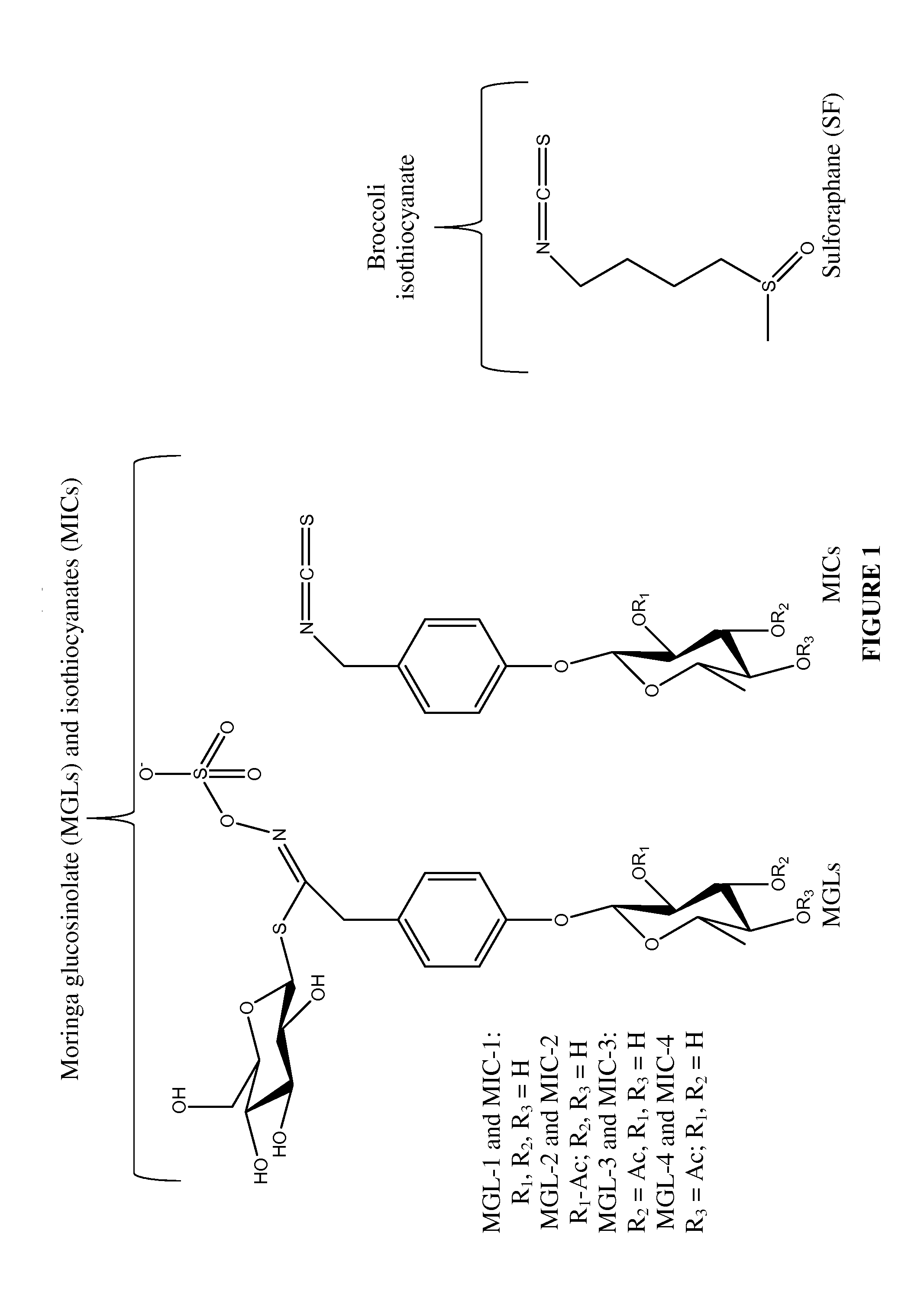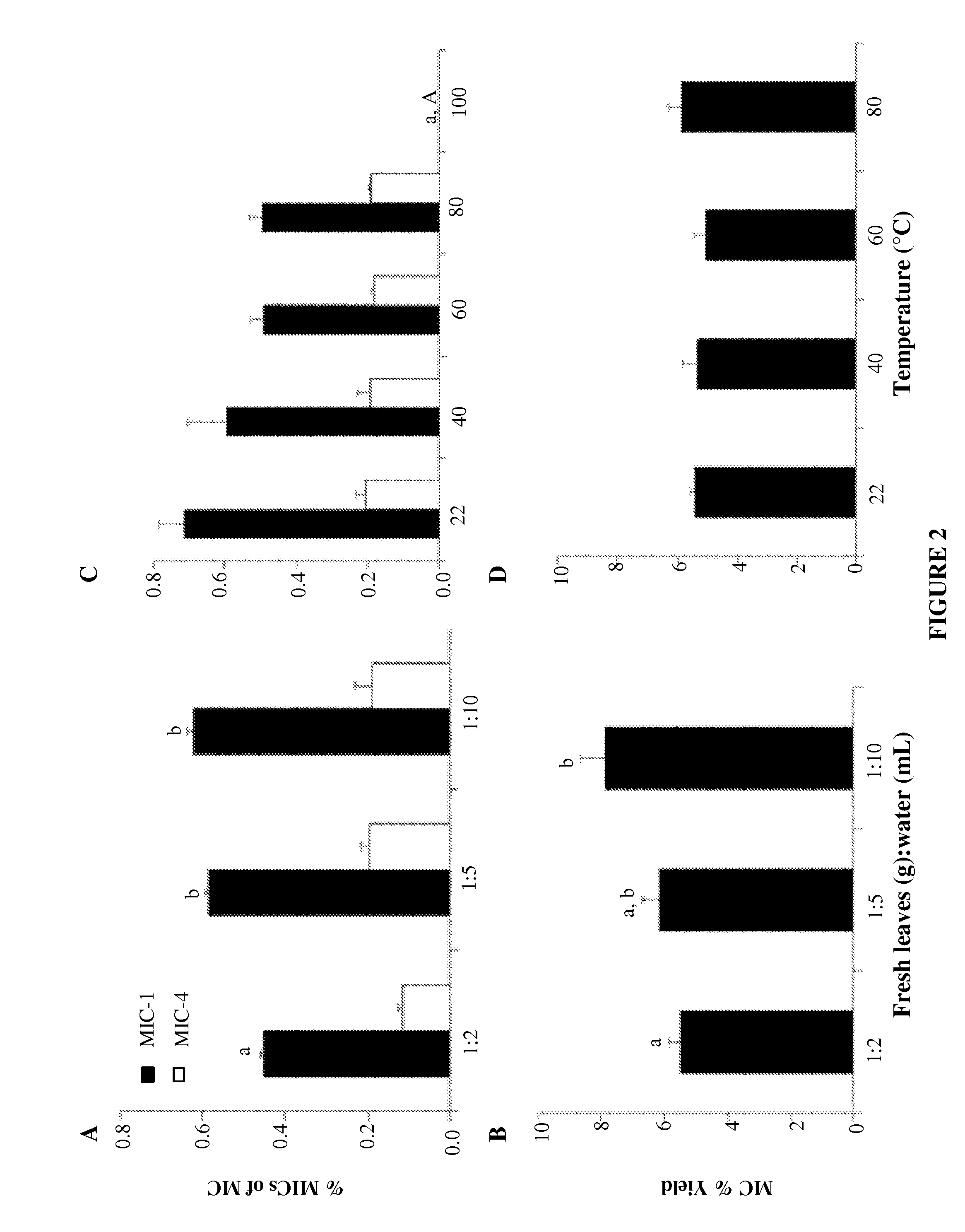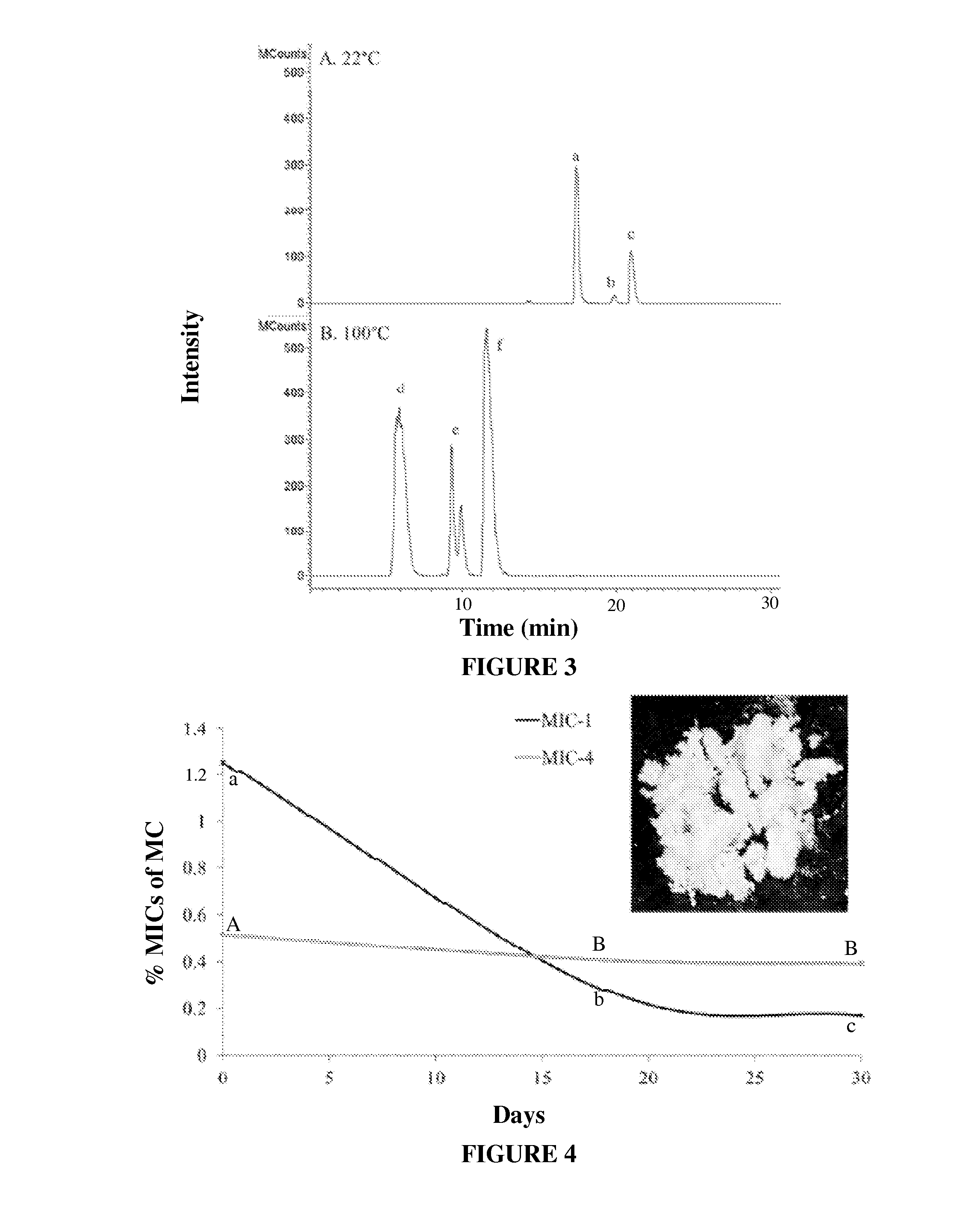Extracts From Plants of the Moringaceae Family and Methods of Making
a technology of moringaceae and extracts, which is applied in the directions of plant/algae/fungi/lichens, drug compositions, and metabolic disorders, etc., can solve the problems of difficult formulation and delivery through other means than eating fresh vegetables, and the clinical and dietary use of moringaceae is somewhat restricted
- Summary
- Abstract
- Description
- Claims
- Application Information
AI Technical Summary
Benefits of technology
Problems solved by technology
Method used
Image
Examples
example 1
Materials and Methods
[0088]Plant Material and Sample Preparation. Fresh leaves and seeds from M. oleifera (Indian PKM-1 variety) were shipped overnight from Moringa Farms, CA. The leaves were extracted using the methods disclosed herein on the day of arrival to produce a moringa extract. Moringa seeds were cultivated at the Rutgers University greenhouse until the plants flowered. A voucher specimen (CW1) was prepared and deposited at the Chrysler Herbarium of Rutgers University (CHRB).
[0089]Fresh M. oleifera leaves were blended (Vitamix 5200 Blender, Cleveland, Ohio) thoroughly with room temperature Millipore water in a ratio of 1 g of leaves to 5 mL of water (1:5) for moringa extract preparation used in stability tests, all biological assays and batch reproducibility assessment. Micro preparation of moringa extract for temperature / dilution optimization was performed by grinding fresh leaves in a coffee grinder (Krups, Millville, N.J.) and then placing them in water. The leaf extrac...
example 2
Optimization of Extraction Method
[0118]Experiments were performed to optimize the in situ biotransformation of MGLs into MICs by myrosinase and to maximize the yield of MICs present in fresh leaves. The solvent ratio (weight of fresh leaves to volume of water) and temperature (22-100° C.) were tested to determine the optimal conditions for moringa extract yield and MICs content. The solvent ratio affected both the concentrations of MICs and the percent yield (FIGS. 2A & 2B). The 1:2 solvent ratio resulted in a lower average MIC-1 content (0.45% of moringa extract) compared with the 1:5 and 1:10 dilution, (0.59% and 0.62% of moringa extract, respectively). The amount of MIC-4 was higher in the 1:5 and 1:10 dilutions, but not to a statistically significant degree (0.12% of moringa extract compared with 0.20%, 0.19% respectively). Larger dilutions resulted in a proportional percent yield increase of moringa extract: (1:2) 5.47%, (1:5) 6.13%, (1:10) 7.87%. The 1:5 dilution factor was se...
example 3
Moringa Extracts Demonstrate Anti-Inflammatory Activity
[0129]Moringa extract produced by the methods disclosed herein demonstrated a dose dependent inhibitory effect on iNOS and IL-1β gene expression in RAW 264.7 macrophages in vitro (FIG. 5A). Tested concentrations of moringa extracts ranged from 5 to 100 μg / mL (0.1% to 1.6% MIC content). The molar concentration of MICs in moringa extract at the various doses ranged from approximately 0.28 μM to 5.5 μM. Almost complete suppression of iNOS and IL-1β gene expression was observed at 100 μg / mL of moringa extract (5.5 μM MIC content).
[0130]Purified MIC-1 and MIC-4 tested at 1 and 5 μM concentrations also showed significant reduction of mRNA expression of iNOS and IL-1β (FIG. 5B). Additionally, moringa extract at 100 μg / mL (FIG. 5C) and MIC-1 at 5 μM (FIG. 5D) were able to decrease IL-6 gene expression significantly. However, no reduction of TNF-α gene expression was seen at any of the concentrations of moringa extract, MIC-1 and MIC-4 t...
PUM
 Login to View More
Login to View More Abstract
Description
Claims
Application Information
 Login to View More
Login to View More - R&D
- Intellectual Property
- Life Sciences
- Materials
- Tech Scout
- Unparalleled Data Quality
- Higher Quality Content
- 60% Fewer Hallucinations
Browse by: Latest US Patents, China's latest patents, Technical Efficacy Thesaurus, Application Domain, Technology Topic, Popular Technical Reports.
© 2025 PatSnap. All rights reserved.Legal|Privacy policy|Modern Slavery Act Transparency Statement|Sitemap|About US| Contact US: help@patsnap.com



